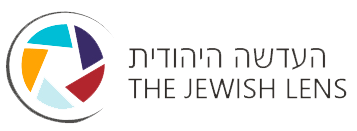Jewish Lens Mini Course - Lesson 3: Jewish Peoplehood
| Overview: | Jewish Peoplehood connects Jews to other Jews around the world, today and throughout history. Jewish peoplehood is an informed and active sense of belonging to the Jewish People based on common denominators.
In this lesson, students consider the meaning of “Jewish Peoplehood,” and begin to articulate their own personal connection to the Jewish People through discussion. |
| Schedule: | 1-2 Class Sessions
Introduction (15-20 minutes) What is Jewish Peoplehood (15-25 minutes) Photo Mission (15-30 Minutes) Share Photographs (10-20 Minutes) Wrap Up (5 Minutes) |
| Materials: |
|
| Preparation: | Set up projector to display the photographs. If laptop and projector are not available, make high-resolution photocopies of the photographs to distribute to students or place around the classroom. |
| Goals: |
|
| Big Idea: | Photography is used for many purposes, including art, documentation, news, and persuasion. The intentions of the photographer will impact on the content and composition of the photograph. |
Introduction (15-20 minutes)
Show the students the following images by Zion Ozeri:
- Soldier On Leave, Israel – 2001
- Jewish Teens from Northern Westchester, New Orleans – 2006
- The Shape of Sound, Yemen – 1991
On the board, make two columns and label them: “Similarities” and “Differences.” Split these two columns into three, one for each of the photographs. One by one, display the images and ask students to identify all the differences they see (or can reasonably assume to be present) between themselves and the subjects of the photograph. Note their answers in the appropriate column. Then have students list the similarities.
Example:
Ask students:
- Do you think you’re more similar to or different from the people in this photograph?
- What makes these photos Jewish?
- Do you feel any connection to these people? Why or why not?
- What does it mean to you that you and they are both part of the Jewish people?
What is Jewish Peoplehood? (15-25 minutes)
You can write these on the board as you introduce each one, discussing the meaning of the pillar with the class. Ask the students to give examples for each (some suggestions have been given below). It is important here that students draw from their own knowledge and experience, so they relate personally to each of the pillars.
Historical memory
(A shared collective memory; re-telling our stories, for example at Passover)
Our understanding of a shared past that, to varying extents, continues to inform our lives. We express our pain and our joy using the communal language given to us by our history. These emotional experiences can take place whether we are celebrating the Exodus from Egypt, lighting the Chanukkah candles, commemorating the Holocaust, or otherwise marking Jewish events and experiences throughout the calendar year. Our history connects us with one another, and we pass these memories down to our children.
A Jewish Way of Life
(What is a Jewish way of life? Faith and lifestyle; rituals and traditions)
This concept refers to what Jews do in their homes and in their personal and communal lives as part of living a Jewish life. This could include lighting candles on Shabbat, fasting on Yom Kippur, celebrating a bar or bat mitzvah, building a Sukkah, and honoring Jewish customs. These practices, however they are undertaken, represent the desire to connect with something beyond one’s individual experience.
Jewish Values
(For example, Tikkun Olam)
Scholars debate whether or not it is possible to refer to particular values as being specifically “Jewish.” Some say that the values that we might attribute to a specific religion are actually universal values that each religion relates to in its own way. Others assert that there are, in fact, concepts that stem from a particular religion that were eventually embraced by the wider world. While the purpose of this article is not to weigh in on this debate one way or another, it is still important to acknowledge the character traits, ethics, and ideals that form the cornerstone of Jewish values; these values are not necessarily exclusively Jewish, but are nonetheless foundational ideals within Judaism. Typically, these terms are expressed in Hebrew, and include—but are not limited to—tikkun olam (repairing the world), tzedakah (justice/charitable giving), Talmud Torah (teaching and learning Torah), bikkur cholim (visiting the sick), hachnasat orchim (welcoming the stranger), and gemilut chassadim (acts of lovingkindness). Judaism has an ethical and moral language that, however it is expressed, is, by necessity, a fundamental and inseparable part of an individual or community’s Jewish life.
A Multifaceted Connection to Israel
(Have any of the students visited before? How often? Do they feel a connection to the land? What does Israel mean to them?)
The Land of Israel, Zion, the Jewish Homeland: these are just a few ways of articulating an idea that has always been a major part of Jewish history and Jewish spirituality. From the very beginning of the Bible through the present day, Jews have related to this concept in a number of different ways, whether through religious texts, prayer, visiting the land, supporting the people and institutions in it, immigrating, or even by protesting against it. Some connect with the concept of Eretz Yisrael, the Biblical land that was promised to Abraham and which the Israelites reached after 40 years of wandering in the desert. Others think of it as a homeland, the culmination of the Zionist movement, and a necessary shelter in the wake of the Holocaust. Another perspective finds connection with the modern State of Israel, a country with nearly nine million people of different races, religions, and ethnicities: a highly successful nation, but one that has yet to reach an agreement with its neighbors and finalize its borders. Each of these approaches can be significant and meaningful ways to relate to a (physical or philosophical) place that looms large in the Jewish imagination.
Hebrew and Jewish languages
(Ladino, Yiddish, the importance in Jewish life placed on learning Hebrew from a young age)
Hebrew has been the universal Jewish language for centuries, regardless of any individual’s fluency in, and understanding of, the language. Nonetheless, it is not the only Jewish language. Yiddish, Ladino, and Judeo-Arabic are particularly prominent and important, though Jews around the world speak—and spoke—a myriad of different languages. Reading, speaking, and writing in one or more of these languages can be a powerful way to connect to people and subcultures within the Jewish community (Yiddishists, socialists, secularists, Zionists, Chassidim, to name a few), and Jewish history.
Jewish Culture and Creativity
(Do the students know of any examples of Jewish art, music, literature? Zion Ozeri’s photographs and the Jewish Lens photography competition are also examples of Jewish creativity)
The world of Jewish art and culture is vast, and there are a number of ways to make it a meaningful part of a Jewish life. The gateway itself is broad, and can refer to works by Jewish creators, Jewish creations, and Jewish interpretations of the works of others. In practice, this can include reading Jewish authors and poets, learning new piyyutim (liturgical poetry), attending an Israeli film festival, singing a new version of Adon Olam, or trying out a new recipe for Passover cake. Taking inspiration from a Jewish figure, such as photographer Anton Mislawsky, Maimonides, Regina Jonas, or Albert Einstein, can be a way of not simply learning from creative Jewish figures, but of reinforcing and reinventing that creativity. Similarly, challenging established thinking—in math, science, architecture, or any other field—is a proud and longstanding part of our tradition of questioning authority and thinking about the world in new and creative ways.
Explain that one might feel connected to one, a few, all, or even none of these pillars – each of our identities is layered, complex, and different from every other. Every individual has a unique way of defining what it means to be Jewish.
Hand out the Six Pillars of Jewish Peoplehood Photo Worksheet to the class and ask students to match each photo with one or more of the pillars (which will be displayed on the board) that they feel are connected or relevant. This task can be done individually or in pairs.
Once the students have made their choices, ask some of the students/pairs to briefly explain why they chose the pairings they did.
Alternatively, you can print and hang the images around the room. Ask students to move around the room and look at all the photographs and then to stand next to one they feel best reflects themselves, or their connection to Jewish Peoplehood.
Once everyone has chosen a photograph, ask several of the students to explain to the rest of the class why they chose that image. What is the message of the photograph? What about the photograph says “Jewish Peoplehood” to you?
Photo Mission (15-30 minutes)
Ask the students to think about which of the pillars they relate to most and then take a photograph (in the building, hallway, outdoors, etc.) that reflects the concept of that pillar. They can choose to take a photograph that reflects one pillar, or to take six photographs for all six pillars.
Make sure to review with the students the various compositional aspects introduced in Lessons One and Two before they begin.
Share Photographs (10-20 minutes)
Have the students share their photographs. Potential points for discussion:
- What did you take a photograph of and why?
- Which pillar did you choose and why?
- Were some of the pillars harder to represent than others?
- What compositional aspects did you consider?
- How would you improve the image if you could?
Wrap- Up (5 minutes)
Show the class ANU – Museum of the Jewish People’s video “You are Part of the Story”:
https://www.youtube.com/watch?v=O8_8z2quiBs
After the video, explain how the skills practiced in today’s lesson were preparation for the final assignment, in which students will be asked to connect their art/photography to their personal Jewish story.

